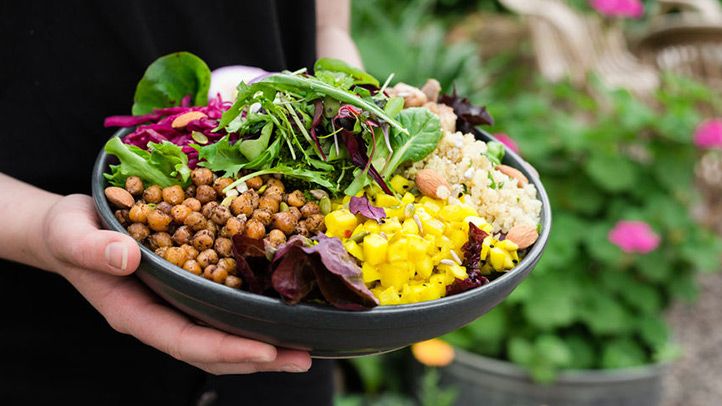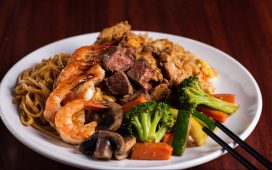Table Of Contents
As every health-conscious person knows, protein is an essential part of a balanced diet. Every meal we eat should contain protein, as it’s vital for muscular strength and health, ensures satiety, and is an excellent energy source.
When you embark on a plant-based lifestyle, you do need to pay extra attention to ensure that you’re getting enough protein in your diet. This is another reason why it’s crucial to make the transition to being 100% plant-based gradually. It hasn’t always been easy to access nourishing protein sources as a vegan, but things have changed significantly since sustainable nutrition has become more mainstream.
What Makes A Plant-Based Diet?
As its name implies, a plant-based diet is one containing mostly plants. However, taking a plant-based journey is often mistaken as being a vegetarian, but take note that these two aren’t the same.
An individual with a plant-based diet can consume foods within these five food groups:
- Whole Grains: Cereals, brown rice, quinoa, oats, wheat, barley
- Vegetables: Broccoli, spinach, lettuce, peas, kale, peppers
- Fruits: Apples, bananas, watermelon, citrus fruits, grapes
- Legumes: Beans, lentils, pulses
- Tubers: Potatoes, sweet potatoes, carrots, beets
If you’re planning to go plant-based, this would mean that you’ll have to bid goodbye to animal protein. Instead, you’ll replace your diet with plant-based protein, which is believed to have lower calories and fat, but higher fiber content and other essential nutrients, which can be a win-win for you.
With the abundance of plant-based protein sources that are now available on grocery store shelves, it’s easier than ever to get what you need of this vital macronutrient in a delicious and cruelty-free way.
Here are four key tips that you need to know about how to get more protein on a plant-based diet.
-
Make the Most of Tofu
Tofu is far and away one of the best sources of plant-based protein you can find. Packing in around 15g of protein per 4 oz serving, as well as iron, calcium, and amino acids, adding more tofu to your diet is an easy way to increase your daily protein consumption.
Tofu is also an incredibly versatile ingredient. Its mild, almost bland flavor profile means it easily takes on the flavors of sauces, spices, and marinades, so you can use it in a wide range of dishes. Silken tofu can be blended into smoothies, sauces, and desserts, while medium tofu can form the base of vegan cheese recipes.
Meanwhile, firm and extra-firm blocks of tofu have a texture when cooked that is similar to certain meats, so it’s the perfect substitute for stir-fries and casseroles.
Aside from a high-quality tofu press, such as a Tofubud press, you don’t need any special equipment to start cooking with tofu. You can even make your own home-made tofu if you’re brave enough!
-
Give Tempeh a Try
Maybe you’ve seen packets of tempeh next to tofu in the refrigerated section of your grocery store, but you’ve never been brave enough to try it. Its appearance may not be as appealing as tofu, but tempeh is just as healthful, offering around 16g per 3 oz serving and has a high probiotic content.
Being a fermented soybean product, tempeh has a more distinctive flavor profile. It’s often combined with flax seeds or spices in its pre-packaged form, but you can also purchase plain tempeh to add to meals.
Tempeh has a chewier texture, with an earthy taste, so it’s great eaten alone with quinoa or any other whole grain. Be warned, however, that tempeh has almost double the calorie content of tofu, so if you’re following a deficit, you will need to be mindful of how much you eat.
Most store-bought tempeh is vacuum-sealed and ready-to-eat, but it would be a better idea to steam or simmer it first. This way, tempeh will soften and be easier to work with. Steaming or simmering it can also remove the slight bitter flavor that some people don’t prefer. If you plan to marinate or season the tempeh, it’s also good to steam it to open its ‘pores.’
-
Love those Legumes
Legumes don’t have to be boring! You may already be eating plenty of lentils, which, at 9g of protein per half-cup, is a wise choice, but plenty of other legumes are now widely available that will add variety to your vegan diet and keep your protein levels up.
Chickpeas, for example, deliver 10g of protein per half-cup, and they can be added to all sorts of recipes. Whiz them up in a blender and add them to soups, sprinkle over crunchy salads, or whip up some DIY hummus with pureed chickpeas, garlic, and lemon juice.
Look out for little wonders like split peas, too (not to be confused with green peas). Split peas are dried and will need to be boiled before 45 minutes before being eaten raw or added to dishes. But with 8g of protein per half-cup, they’re an excellent source to have on hand.
-
Eat up Edamame
A staple of Japanese cuisine, if you enjoy eating edamame when you dine out, add some to your weekly shopping list. Edamame is another high-protein addition to a vegan diet, serving up 12g of protein per half-cup. It’s also rich in fiber, low GI, and may reduce blood sugar levels.
Edamame needs to be shelled and steamed before it can be eaten, but you can buy frozen edamame from most grocery stores. It’s great when added to cold salads, particularly green and pasta salads, but it can also be heated and added to cooked dishes.
5. Meeting Macro and Micro Nutrient Needs
By merely incorporating your favorites from this list of protein sources alongside seeds, whole grains, and fruits and vegetables regularly, you’ll be able to create a healthy and balanced vegan diet plan that will meet all your macro and micronutrient needs.
Aside from protein, don’t forget to incorporate other essential nutrients, vitamins, and minerals into your diet. You’ll reap the benefits of good overall health by maintaining a healthy and balanced diet.






